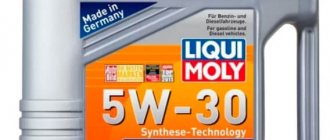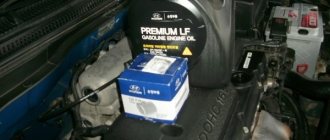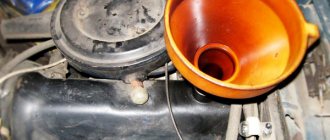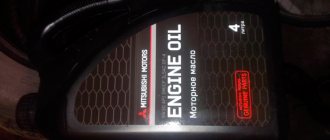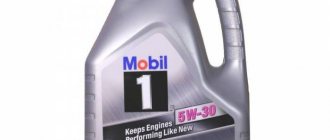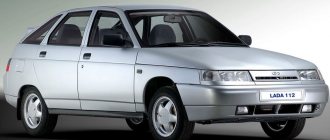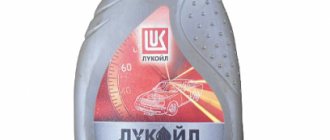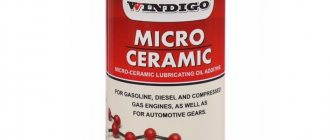Why does an engine need oil?
The lack of oil in a four-stroke engine leads to rapid wear of working parts. From this it turns out that lubricant is used to reduce wear on the components of the internal combustion engine. When the motor operates, friction occurs between moving parts, which, according to the laws of physics, heat up. The higher the speed of movement of parts, the faster they not only heat up, but also release a large amount of thermal energy.
To suppress high temperatures, four-stroke internal combustion engines are filled with oil. Only cooling heating parts is not the only function of liquid lubricant. It is designed to implement the following functions:
- cooling of parts that heat up due to friction;
- lubrication of the surface of rubbing parts, due to which the resistance decreases, and therefore the heating temperature decreases;
- cleaning the surface of the working components of the internal combustion engine from metal particles and dust formed during friction of parts;
- protection of components from corrosion processes.
Car owners often wonder what is the danger of keeping a vehicle idle for a long time? When the car is idle for a long time, the rubber seals begin to wear out faster. However, the biggest danger of frequent vehicle downtime lies in oil draining into the crankcase. When starting the engine in the first minutes, it is observed to run idle (due to the lack of lubrication), thereby significantly reducing the resource due to friction of parts. This is especially dangerous in winter, when thickened lubricant splashes throughout the engine only after it has warmed up. This takes at least 3-5 minutes, depending on the ambient temperature, as well as the type of engine oil used.
Why does motor lubricant need to be changed?
The motor oil in the engine gradually ages. Aging refers to oxidation of the lubricant, burnout of additives, and accumulation of contaminants. This process leads to the fact that the lubricant is no longer able to perform its initial functions. With aging, an increase in engine temperature is observed, fuel consumption increases, and the service life of working parts decreases.
The process of changing the oil in a Lanos car engine means draining the waste (this is the name of a lubricant that has already served its stated period), followed by filling in a new substance. During the procedure, the oil filter must be replaced. This part is designed to catch metal shavings and dust, and prevent its penetration into the working parts of the engine. From the oil pump, lubricant is supplied to the filter, where it is cleaned and flows upward without contamination.
What kind of oil to fill in Chevrolet Lanos
Motor oil for Chevrolet Lanos, regardless of the engine installed in the car, must have a factory approval from GM with the same name GM Dexos 2. This information can be confirmed to you by the operating manual for your vehicle of this line. Accordingly, when choosing engine oil for a Chevrolet Lanos, preference should be given to the original product called General Motors Dexos 2 5W-30. However, you shouldn’t refuse to buy its analogues either. After all, SHELL Helix HX8 Synthetic 5W-30 and TOTAL Quartz INEO MC3 5W30 motor oils also have a similar specification.
| General Motors Dexos 2 5W-30 | 5 liters Article: 93165557 Average price: 1850 rubles 1 liter Article: 93165554 Average price: 450 rubles |
| SHELL Helix HX8 Synthetic 5W-30 | 4 liters Article: 550040542 Average price: 2200 rubles 1 liter Article: 550040462 Average price: 550 rubles |
| TOTAL Quartz INEO MC3 5W30 | 4 liters Article: 157103 Average price: 3000 rubles 1 liter Article: 166254 Average price: 650 rubles |
What are the dangers of operating a Lanos car and Chance 1.5 during testing
It is not recommended to practice operating a car during testing, because this leads to unpleasant consequences, which manifest themselves in the following types:
- Motor overheating. Mining not only removes heat worse, but also increases friction (increases temperature) due to the presence of a large amount of metal dust in the composition.
- Over time, the lubricant begins to thicken, which increases friction between parts. As a result, internal combustion engine components begin to operate under heavy loads, as well as at elevated temperatures. Initially, untimely oil changes will manifest themselves in the form of increased fuel consumption, as well as an increase in engine temperature. The temperature needle will rise higher than usual, the fan(s) will start to turn on more often and run longer. This will also negatively affect the quality of antifreeze, which, due to rising temperatures, will begin to age faster, which will also lead to the need for its frequent replacement.
- Reduced anti-corrosion properties. Oil that has served the stated period will not be able to protect engine parts from corrosion. First of all, because it will not create an oil film.
- Clogged oil channels. Fuel combustion products accumulate inside the engine and begin to clog the channels. The less often the lubricant is changed, the faster the channels become clogged, and as a result, this will manifest itself in the form of unstable engine operation.
Consequences of untimely replacement of engine oil
The most dangerous consequence of untimely replacement of engine lubricant is jamming of parts. In the event of such a breakdown, a major overhaul or complete replacement of the engine will be required, depending on the consequences that arise.
Choosing the best engine oil option for Lanos and Chance
Having decided on the frequency of oil changes in the Chevrolet and Daewoo Lanos engines, all that remains is to choose the optimal lubrication option. Today, motor fluids are produced by different manufacturers in a wide price range. To analyze all the brands and find out which is the best engine oil for Lanos, even a few months will not be enough. When choosing it, you should know what the manufacturer recommends pouring into the engine. And he recommends using lubricants of the following quality classes (tolerances) and viscosity:
- API SJ and ACEA A1/A2/A3;
- SAE 5W-40;
- SAE 10W-40;
- SAE 15W-40.
For regions with cold winters, it is recommended to use synthetic oils with a viscosity of SAE 5W-30, and for temperate climates lubricants designated 10W-40 and 15W-40 are suitable. Below is a general table of viscosity classes depending on the ambient temperature.
This is interesting!
Regarding viscosity, I would like to note that it is recommended to use oils of the exact viscosity recommended by the manufacturer in the manual.
The original engine oil for Lanos is
General Motors GM 5 W-30 Super Synthetic
. The main difficulty is that it is almost impossible to find. In addition, the price of the original oil is significantly higher, so in this case you should pay attention to other brands. The following manufacturers produce good quality motor lubricants:
- ELF - France.
- Mobil - USA.
- Shell - Netherlands.
- Castrol - UK.
- Liqui Moly - Germany.
- Motul - France.
Each manufacturer has a line of oils that vary in quality and cost. Which oil is better to choose for a Lanos car - it all depends on the wealth of the car owner. Considering that Lanos is a car belonging to the budget segment, it makes no sense at all to use expensive oils, for example, Castrol EDGE FST 5W-30, when you can use a lubricant that costs 2 times less - Mobil Super 3000 5W-30.
This is interesting!
It is important to buy not the most expensive oil, but really high-quality one. After all, today counterfeits are very common, so it is recommended to buy it in specialized stores (including online stores), where quality is carefully controlled, and direct purchases are made from manufacturers.
Composition selection
When choosing engine oil for Chevrolet Lanos, you should pay special attention to viscosity tolerances and classes. These are the main characteristics with the help of which the optimal composition of the lubricating fluid is selected. If we use the American API classification, the following types of oils are suitable for this car:
Don't forget about viscosity grades. The following options are suitable for Lanos:
It is not recommended to use low-quality and viscous compounds, as this will lead to a gradual deterioration of the condition of the power unit and wear of its components.
Among the recommended oils for the Chevrolet Lanos engine are the following manufacturers:
In addition to the oil itself, to replace the lubricant you will need to simultaneously change the old oil filter. It plays a vital role, so use only high-quality options to separate the oil in the engine. Filters from Mann and Hexen are optimal for Lanos.
Synthetic vs semi-synthetic
The list of recommended motor oils for Chevrolet Lanos cars includes all three types of formulations:
But mineral oils do not have sufficient physical and chemical properties to ensure proper engine operation under all conditions and under severe loads. Therefore, car owners mainly choose between synthetic and semi-synthetic compounds. They have the following advantages over mineral motor oils:
When choosing a lubricant for your power unit, buy with a reserve. When changing oil in a Chevrolet Lanos engine, you will need to use about 4 liters. A spare volume of oil will be needed during periodic checking of the level and topping up the mixture as it is consumed.
What you need to know before changing the engine oil Lanos and Chance 1.5
The most important information when changing the oil in a Lanos car engine is the required volume of fluid. This information is needed to determine the capacity of the canister you are purchasing. The engine of Chevrolet and Daewoo Lanos (and Chance 1.5) cars holds 3.75 liters of oil
. This is provided that it is possible to drain absolutely all the waste, which is almost impossible to do. When replacing, it usually holds from 3.2 to 3.5 liters, so you can safely buy or order a 4-liter canister of engine oil.
Before proceeding with the actual procedure of changing engine oil on Lanos, it is recommended to consider the following recommendations and important points:
- Along with the oil, you must purchase an oil filter. It changes along with the lubricant, but not before or after the procedure. It is recommended to choose an original GM oil filter. Its article number is 96879797. Equally high-quality filters are produced by such manufacturers as Mann Filter, Bosch, Daewoo (article number 94797406), ICRBI and others.
- Should I buy cleaning fluids or not? Various cleaners are all a waste of money. You should not use them, as their effectiveness is no more than 10%. Many cleaners are used to calm the soul, while others hope that they actually free the engine from carbon deposits. No cleaning fluid can clean the inside of the engine, so don't waste it. If you want to flush the engine, then it is recommended to buy a 1-liter canister of the same oil that you plan to fill in the internal combustion engine. As soon as the waste has been drained, you need to pour a liter canister into the engine (do not start the engine) and drain it immediately. After this, fill in new oil from a 4-liter canister. A similar procedure is performed when switching from one brand (manufacturer) of lubricant to another. Therefore, the answer to the question that was asked at the beginning of the paragraph is obvious - we do not use any cleaners, since they are simply useless.
- After replacement, do not mix oils from different manufacturers, and also avoid adding various additives. Today there are a lot of additional additives, the purpose of which is not at all to increase engine efficiency, but to empty the wallets of car owners. The additive is especially popular for eliminating the knocking of hydraulic compensators. Even if you bought and felt the effect of eliminating knocking, this does not mean that you can constantly pour in the additive so as not to hear the annoying knocking of the engine. Such an additive is only a temporary opportunity to increase the service life of a faulty part. In the near future, it is necessary to eliminate the cause of the knocking of compensators, valves, etc. as soon as possible. In general, additives are used at your own peril and risk, because today not only oils, but also various additives to them are actively counterfeited. If you want the engine to serve for a long time and efficiently, then discard additives and other substances, and simply carry out maintenance in a timely manner using high-quality oil.
The process of changing engine oil on a Lanos car does not present any difficulties. Even a beginner can handle the replacement procedure. A detailed description of this process is presented in the next section.
What kind of oil to put in Lanos
When choosing oil for Lanos 1.5 liter, as well as when choosing a filter, we recommend purchasing a higher quality product from trusted manufacturers. Poor quality oil can have a negative impact on engine life. And with cheap and low-quality filters, the sealing ring very often allows oil to leak out, not to mention other shortcomings.
Choosing oil for the 1.5 engine
We recommend choosing oil from trusted manufacturers such as: Shell, Castrol, Zic, Xado, G-Energy, Liqui Moly, Mobil. Viscosity SAE 5W30, 5W40, 10W40, depending on mileage. The higher the mileage, the thicker the oil is needed. API quality classification: SJ, SF, SG, SH. The required oil volume is 3.8 liters .
Oil filter for Lanos
| Manufacturer | vendor code | Average price, rub. |
| Original | ||
| General Motors | 96395221 | 340 |
| Analogs | ||
| SCT | SM 105 | 114 |
| Filtron | OP570 | 125 |
| Knecht Filter | OC90 | 212 |
Required tool:
- 17mm socket or socket wrench
- container for draining old oil
- special wrench for unscrewing the oil filter F-61901 “FORCE” or a similar puller
- watering can for pouring oil
- clean rag
Instructions for changing engine oil Lanos and Chance
The process of changing engine oil on a Lanos and Chance 1.5 car begins with warming up the engine. This is necessary so that the oil becomes more liquid, and at the same time drains out of the engine in the maximum amount. The optimal engine temperature when draining the oil is 60-80 degrees. As soon as the engine is warmed up to the desired temperature, you should begin the immediate procedure:
- Initially, the car must be installed in an inspection hole, which increases the convenience of the work.
- Protection is removed if it is present. If the protection has a hole for access to the drain plug, then there is no need to remove it.
- We prepare a container into which the waste will be drained and unscrew the drain plug. To do this you will need a key set to “19”.
- You can increase the oil drain rate by unscrewing the filler plug. The reduction in speed is due to the creation of a vacuum inside the engine.
- The duration of the drain is usually from 10 to 15 minutes.
- While the oil is draining, proceed to unscrewing the old oil filter. The procedure should be carried out with gloves, as the engine is very hot, and you can get burned.
- If you cannot unscrew the filter manually (the thread is stuck), then use a special puller. Instead of a puller, you can use a screwdriver to pierce the filter housing through, thereby making a handle.
- Instead of the removed filter, a new one is installed. Many people recommend filling it halfway with oil before installation. Is it necessary to do this? First, let's find out why it is recommended to pour lubricant into the new filter. This is done so that lubricant splashes in the first seconds after startup. On Lanos, it is not at all necessary to fill the filter with lubricant, since the high-performance oil pump copes with the task of supplying the substance quite effectively. However, nothing bad will happen if oil is poured into the filter before installing it.
- The new filter is screwed in by hand. There is no need to use a special puller.
- Before adding new oil, you should check the condition of the drain plug. Particular attention is paid to the O-ring, which should be replaced if there are signs of damage. In any case, it is better to replace it, since a leak may soon appear, which will lead to a rapid decrease in the oil level in the engine.
- Attention should also be paid to the condition of the edges of the cork. If they are licked off, it is better to immediately replace the entire part along with the sealing ring. The serial number of the plug is 94500883/94535699, and the O-ring is 94545114.
- After tightening the drain plug, you can start pouring new oil. If flushing is carried out, then you should first pour 1 liter into the engine, and then immediately drain it. Next, 3 liters of lubricant is poured in.
- After this, we continue to add oil, monitoring its amount in the engine using a dipstick.
- Typically, the Lanos engine holds from 3.2 to 3.5 liters. When the dipstick mark reaches the maximum value, tighten the filler plug and start the engine.
- When starting, the oil pressure indicator will light up and go out after a while. Usually it lights up and goes out immediately after starting, but in the case after replacement it can stay on for up to 10-15 seconds.
- When the engine has been running for several minutes, you need to check the oil level again using the dipstick.
- When the level on the dipstick decreases, it is recommended to add oil to the engine to the average level. After all, not only low levels are dangerous, but also high ones. If it is overdosed, contaminants will enter the intake manifold through the ventilation duct.
This completes the procedure for changing engine oil on a Lanos car. It remains to record the mileage value in order to promptly resort to the replacement procedure next time. A video on changing the oil on Lanos and Chance 1.5 is presented below.
In conclusion, it is worth noting that if, after a mileage of 2-3 thousand on a not new car, it is discovered that the oil does not change its color (it should turn black), then this indicates the low efficiency of the motor oil used. When draining the waste, it should be black, which indicates the effectiveness of cleaning the engine walls. There will always be carbon deposits on the inner walls of the engine, so a change in the color of the oil after an oil change and a mileage of several thousand indicates the correctness and efficiency of its operation.

